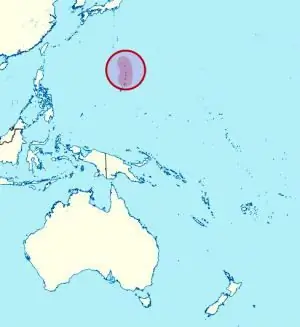- Author Harold Hamphrey [email protected].
- Public 2023-12-17 10:06.
- Last modified 2025-06-01 07:20.
The Fiji archipelago, consisting of more than 300 islands, is located in the Pacific Ocean and is part of Melanesia. Approximately 110 islands are inhabited. The islands of the archipelago, surrounded by coral reefs, are the remains of a sunken continent. There are extinct volcanoes here, the largest of them is Tomativi (1322 m).
The Fiji Islands are located in a zone of seismic activity. The largest island in the Pacific Ocean is Viti Levu. Its area is 10.4 thousand square kilometers. It is home to more than 70% of the total population of the country. Another large island of the country is Vanua Levu.

The Fiji Islands have a hot and humid tropical climate. During the year, 2500-3000 mm of precipitation falls here. Their maximum number is observed from November to April, when tropical cyclones come here. The warmest month is January (about 30 degrees), the coldest is July (20-26 degrees)
In the south-east of the island of Fiji are covered with evergreen forests, with ficuses growing in them, tree ferns and palm trees. The rest of the territory is dominated by deciduous forests and savapp tall grasses.
In the citiesThe Fiji Islands are home to 46% of the population. 55% of the total population are indigenous Fijians, 37% are Indians, who were brought by the British for hard work on cotton plantations. Relations between these communities are not the best. Evidence of this is the interethnic conflicts of the late eighties of the twentieth century, military coups that were caused by dissatisfaction with one of the communities with the political activities of another national group.

Fijikians carefully preserve their identity and culture. Power in the villages belongs to the leaders, and it is inherited. Western fashion has not been able to supplant the national dress of the Fijians - they still wear colored shawls on their hips and decorate their heads and chests with bright flowers.
The main attraction of the Fiji Islands is the magnificent tropical nature. Deserted sandy beaches stretch for tens of kilometers. Here is a real paradise for diving - the underwater world in these places will not leave indifferent either a beginner in scuba diving or an experienced diver. Along the entire perimeter of Viti Levu there is an automobile route, along which tourists can go around the coast.
Suva, the capital of Fiji, is located in the southeast of the island. This is one of the largest cities on the Pacific coast between the Hawaiian Islands and New Zealand. The Fiji Islands amaze all visitors with their unusual cleanliness and well-groomedness. It seems that nature itself protects this luxurious corner of the Earth. The rainforests are filled with the singing of rare birds.

Aromas of unprecedented flowers, exotic plants, beautiful waterfalls - all these are the islands of Fiji. The photo, unfortunately, will not be able to convey even a hundredth of the vivid impressions that you can get by visiting these heavenly places.
The Fiji Islands are equally conducive to both passive contemplation of unearthly beauty and active recreation. The choice is yours. But you might be interested to know that scuba divers all over the world consider these places to be the best for diving.






